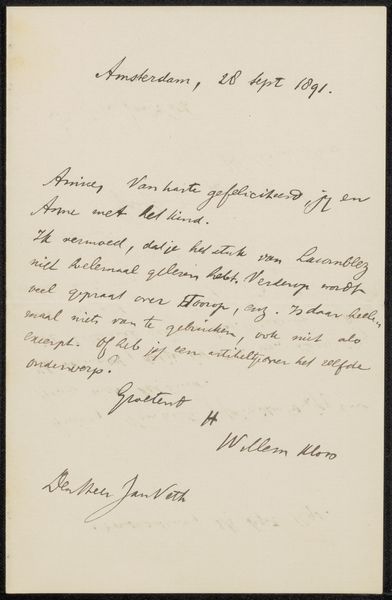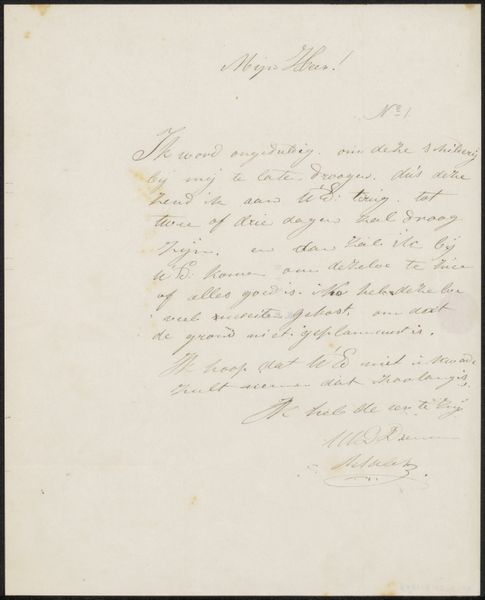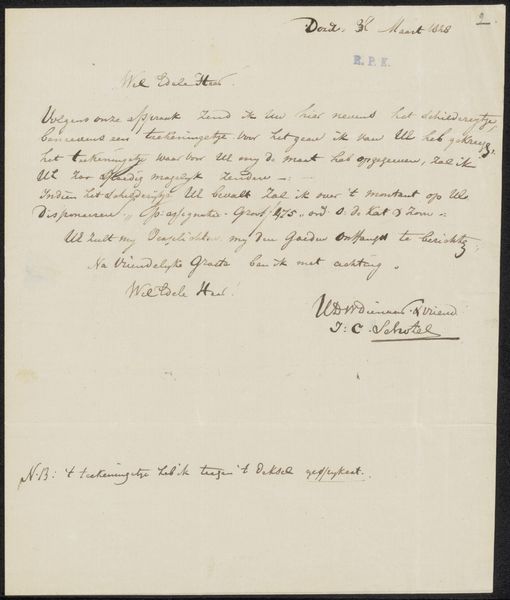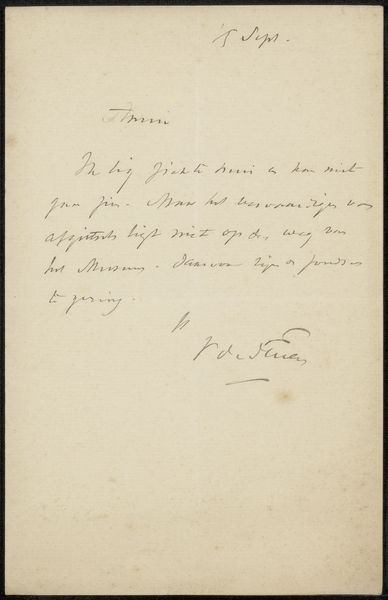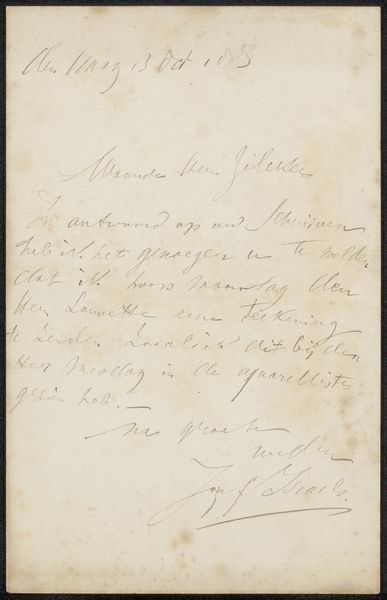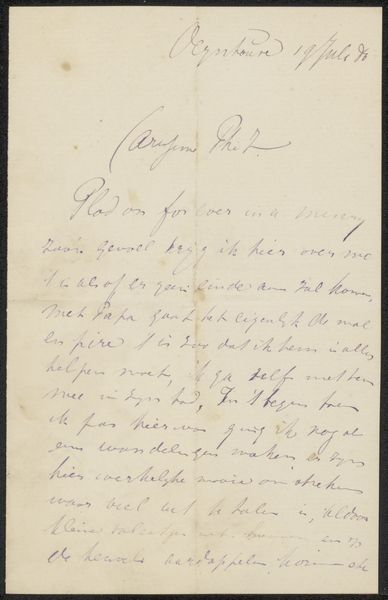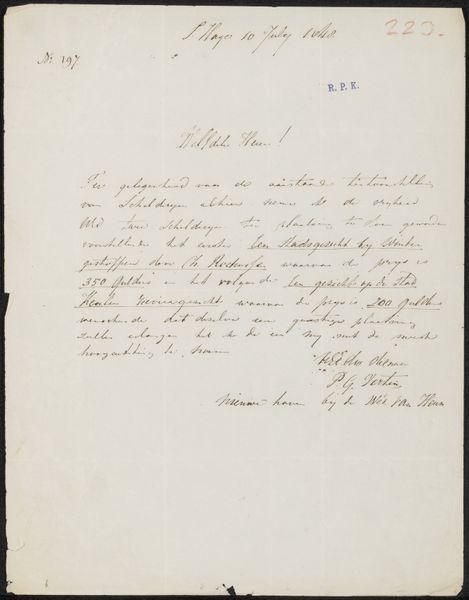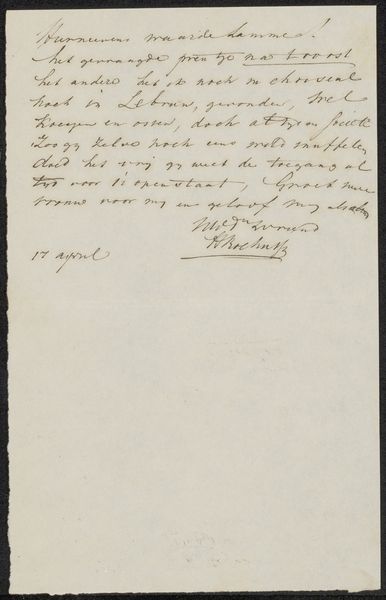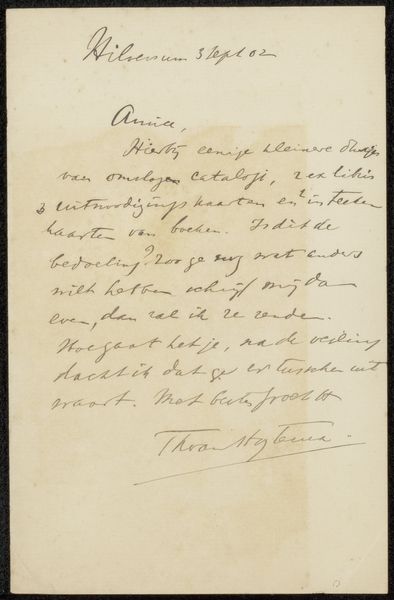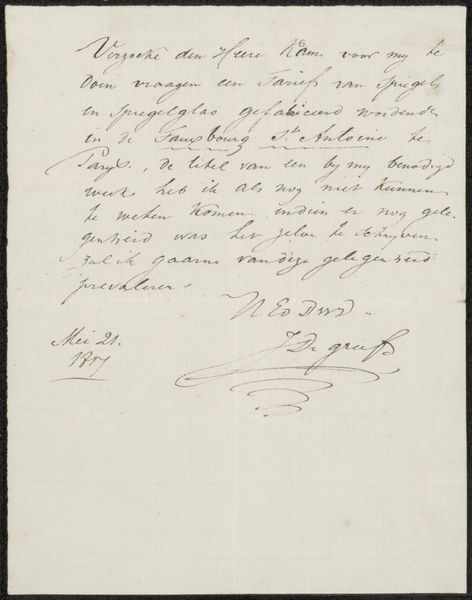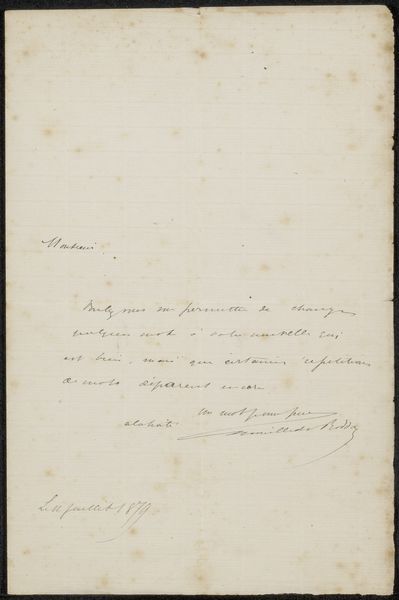
Copyright: Rijks Museum: Open Domain
Curator: Here we have "Brief aan Jan Veth," which translates to "Letter to Jan Veth," a pen and ink drawing possibly from 1889, by Willem Kloos. It embodies a romantic style, quite delicate with its pen strokes. Editor: Oh, it has a melancholic feel, doesn't it? It’s the faded ink and the handwriting. It feels like discovering a secret message tucked away for ages. Imagine what was swirling around in the poet's mind! Curator: Exactly. As an influential literary critic, Kloos significantly shaped Dutch literature, and his connection to Jan Veth, a fellow artist, speaks to the intertwined nature of the art world at the time. It really demonstrates how essential letter writing was for the exchange of ideas. Editor: True! The materiality just lends itself to that intimacy. Each flourish and cross feels so intentional, as though one thought leads directly to the next—almost like following the stream of consciousness. You can trace the history embedded within these delicate markings and erasures. It makes one think about authenticity too; handwriting gives a deeper personal insight to whoever held this pen and wrote on this specific piece of paper. Curator: I completely agree, which offers great insight into romanticism as a movement because they strived for direct and pure emotions in reaction to enlightenment thinking that elevated reason above all else. Romanticism gave weight to more irrational sentiments and focused instead on nature. So seeing this movement embedded even in correspondence provides a strong foundation in support for those ideas. Editor: I appreciate that context. It reframes the simple letter. Suddenly it stands as a profound historical object. It takes you on a quiet journey. Curator: Well said, it really does echo the personal journey of Kloos himself during those intense times of change, both politically and socially. Editor: What an interesting and inspiring work of art to contemplate!
Comments
No comments
Be the first to comment and join the conversation on the ultimate creative platform.
